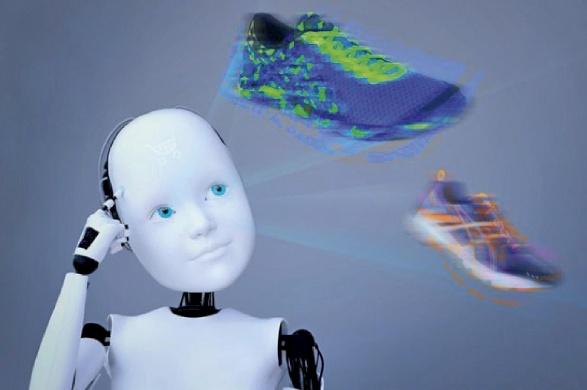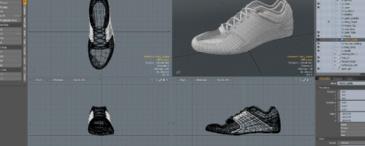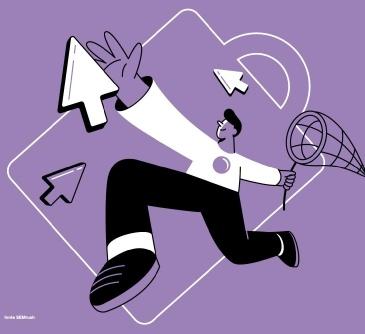
4 minute read
Retail and the concept of OnLife Il digitale sarà sempre più pervasivo Digital technology increasingly pervasive
from Foto Shoe 30 2021-01
by edizioniaf
IL DIGITALE
SARÀ SEMPRE PIÙ PERVASIVO
DIGITAL TECHNOLOGY
INCREASINGLY PERVASIVE
Il digitale sta cambiando velocemente lo scenario dell’industria della calzatura, i più interessanti sviluppi riguardano l’AI, la tecnologia 3D e le stampanti 3D Digital technology is quickly changing the scenario of the footwear industry, with the most interesting developments regarding A.I., 3D technology, and 3D printing
L’emergenza Covid ha accelerato il processo di digitalizzazione del mercato della calzatura, un trend che non tutte le aziende, soprattutto le più piccole, sono in grado di intercettare. Ma una soluzione alternativa non c’è: bisogna adeguarsi per restare competitivi, con la consapevolezza delle opportunità offerte da questa tecnologia. Ne parla un panel di esperti al Technical Footwear Revolution Summit. Uno degli aspetti più interessanti del digitale applicato dal settore è offerto dall’Intelligenza Artificiale. “Molti pensano che riguardi solo la robotica, immaginando, ad esempio, robot che interagiscono con gli esseri umani un po’ come succede in Guerre Stellari – dichiara Paulo Novais della Minho University - mentre in realtà uno degli sviluppi più interessanti riguarda i programmi intelligenti che permettono di processare i big data e possono essere applicati anche allo studio dei dati biometrici della camminata, ottenendo feedback implementabili nel miglioramento della produttività”. Il digitale è uno strumento fondamentale anche per la customizzazione, un trend in forte accelerazione spinto dalle preferenze dei consumatori. Certo è più difficile applicarlo al mass market, tuttavia è destinato nel futuro a non essere più di nicchia: “I consumatori dal loro pc o dallo smartphone possono, già oggi, effettuare la scansione del piede e scegliere il modello più adeguato alla loro forma, per poi procedere alla personalizzazione della scarpa con colori, materiali e The outbreak of Covid accelerated the digitalisation of the footwear industry, a trend that not all companies, especially smaller ones, were able to intercept. An alternative solution, however, does not exist: in order to remain competitive, businesses must adapt and understand the opportunities offered by this technology. This was the topic of discussion by a panel of experts at the Technical Footwear Revolution Summit. One of the most interesting aspects of digital technology applied by the sector is represented by Artificial Intelligence. “Many believe it is only about robotics, imaging robots that interact with human beings, kind of like what happens in Star Wars – declares Paulo Novais from Minho University – while in reality, one of the most interesting developments regards intelligent software programs that allow big data to be processed and which can also be applied to the study of biometric data on walking, allowing feedback to be obtained and implemented to improve productivity”. Digital technology is a fundamental tool also for customisations, a trend that is quickly accelerating and being driven by the preferences of consumers. Certainly, it is more difficult to apply it to the mass market, nevertheless, in the future, it is destined to no longer be a niche category: “From their PCs or smartphones, already today consumers can scan their feet and choose the model most suited to their shape,
componenti preferiti – dichiara Shayne Smith CEO di RestAR. La tecnologia VR, tramite 3D glasses, permetterà al consumatore di vivere un’esperienza ancora più pervasiva ed eccitante, con una componente di gaming”. Questa tecnologia è stata applicata in modo proficuo da alcune aziende per far visionare le collezioni ai clienti, superando così l’ostacolo rappresentato dalle restrizioni ai viaggi causato dalla pandemia: “Il 95% del nostro sviluppo è concentrato sul 3D, alla ricerca di una qualità ‘hot’ da far visualizzare ai nostri interlocutori – spiega Jens Schmidt CEO di Footwear Innovation Lab. È un modo per accelerare l'introduzione dei prodotti sul mercato con una modalità più sostenibile: i feedback ottenuti da consumatori e distributori possono indirizzare le scelte produttive, senza rischio di sprechi. I consumatori apprezzano il 3D modeling e la conseguente visualizzazione: per loro è un modo normale e comprensibile di approcciare il prodotto. Anche i distributori l'hanno adottato: è diventato un trend”. Infine, nel campo della produzione, molta fiducia è stata assegnata alle stampanti 3D: in breve tempo permettono di mettere a disposizione un nuovo modello per diverse azioni/valutazioni/operazioni, con evidente risparmio di tempi e costi rispetto alla prototipazione tradizionale… ma nel futuro le stampanti 3D non si limiteranno alla prototipazione, diventeranno un utile ausilio per la customizzazione della scarpa. to then proceed with the personalisation of the shoe with their preferred colours, materials, and components – declares Shayne Smith CEO of RestAR. VR technology, through 3D glasses, will allow the consumer to enjoy an experience that is even more engaging and exciting, with a gaming component”. Some companies applied this technology in an advantageous way, so they could present their collections to customers, thus overcoming the obstacle of pandemic-related travel restrictions: “95% of our development is focused on 3D, and on the search for a ‘hot’ quality that can be shown to our stakeholders – explains Jens Schmidt, CEO at Footwear Innovation Lab. It is a way to accelerate the introduction of products onto the market in a sustainable way: the feedback obtained from consumers and distributors can orient productive decisions, without the risk of being wasteful. Consumers appreciate 3D modelling and the ability to visualize products in this format: for them it is a normal and understandable way to approach the product. Even distributors have adopted it: it has become a trend”. Finally, in the field of production, much trust has been placed in 3D printing: in a short amount of time, it allows a new model to be created for different actions/evaluations/operations, with a clear savings in time and costs when compared to traditional prototyping… however, in the future, 3D printing will not be limited only to prototyping, but will also become a useful tool in the customisation of shoes.






